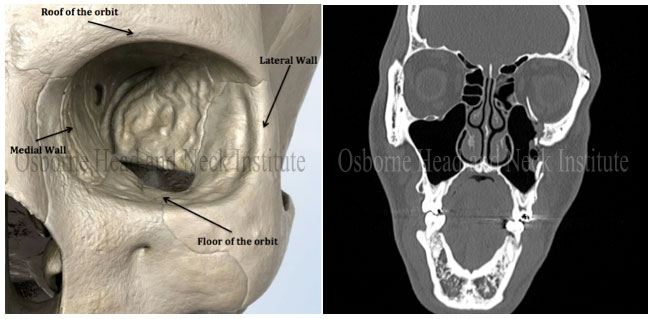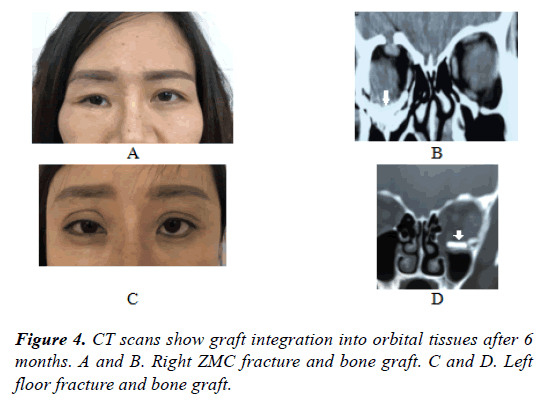

Given that the lacrimal gland is located in the superolateral aspect of the orbit, “this suggests that the anatomical disruption and mechanical compression from orbital trauma contributed to the resulting injury of the lacrimal gland, including hematoma, edema and vascular insufficiency.”Įarly recognition of orbital fractures with lacrimal gland involvement with raised awareness in the clinical setting “could preserve visual function and prevent further complications,” the study authors concluded. “One plausible explanation for our observation was that the rate of DES occurrence following the orbital fracture was attributed to lacrimal gland injury,” the authors wrote in their study. Regardless of receiving surgery or not, the patients with orbital fracture had a higher risk of developing subsequent dry eye. A lateral canthotomy is then performed with a 15 blade followed by an inferior. 40 silk sutures are placed through the lower eyelid at the level of the tarsus.
#Orbital fracture series
Delayed inflammation related to porous polyethylene sheet implants is very rare and no case series of this condition have been reported. Forced ductions are checked which are shown to be restricted in supraduction. Background Porous polyethylene implants are commonly used in orbital blowout fracture repair because of purported biocompatibility, durability, and low frequency of complications. Specifically, patients with orbital roof fracture had the greatest risk of developing dry eye. This video demonstrates repair of a left orbital floor fracture.

The orbit, or eye socket, is the cavity of the skull that holds the eye.

Methods Thirty patients (3 to 14 years old. In this study, we analysed the clinical characteristics of delayed paediatric patients, especially those with different levels of ocular motility restriction before surgery. Although early surgery is recommended, there still remain some patients delayed by various reasons. When stratified by age group, the data showed that orbital fracture was most common among patients aged 18 to 29 years. Evaluation of patients with suspected orbital fracture should involve radiologic examination, motility test, diplopia field test and exophthalmometry. An orbital blowout fracture is a fracture or break in the small bones that make up your eye. Background Trapdoor fracture is a special type of orbital blowout fracture. Statistical analysis demonstrated that the case group had an almost fivefold increased risk of dry eye compared with controls. The team found that during the follow-up period, the case group was more likely to develop incident dry eye (0.17%) than the control group (0.11%). Each patient in the case group was age- and gender-matched to four controls without orbital fracture. Minimally displaced orbital floor fracture. Fracture severity ranges from small minimally displaced fractures of an isolated wall that require no surgical intervention to major disruption of the orbit as seen in the images below. Overall, 46,179 and 184,716 participants comprised the study and control groups, respectively. Orbital fractures are commonly seen with midfacial trauma. The investigation included patients from the Taiwan National Health Insurance Research Database. New research suggests that patients with orbital fracture are at higher risk of dry eye compared with the general population.


 0 kommentar(er)
0 kommentar(er)
